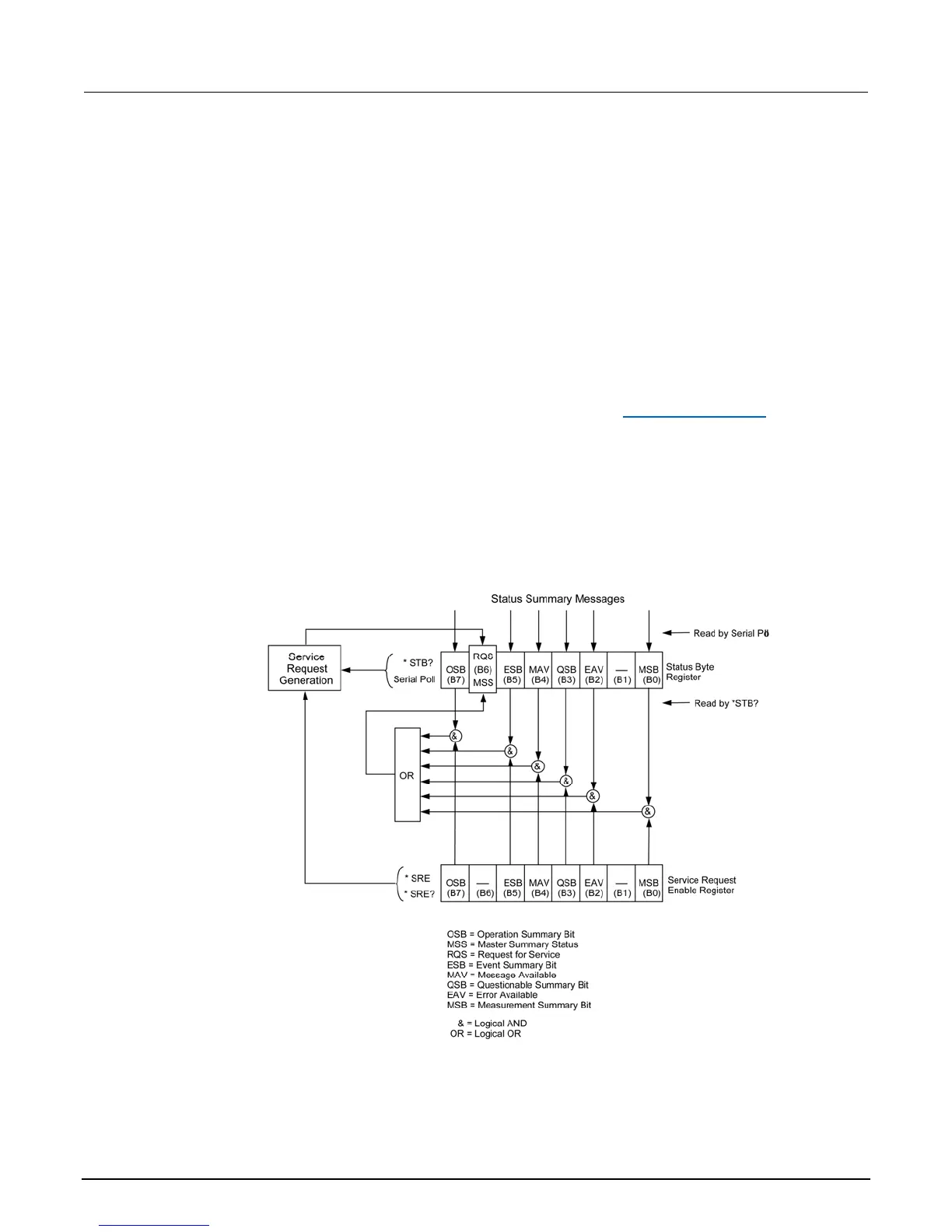Section 13: Status structure Model 6517B Electrometer Reference Manual
13-12 6517B-901-01 Rev. C / August 2015
Status byte register
The summary messages from the status registers and queues are used to set or clear the appropriate
bits (B0, B2, B3, B4, B5, and B7) of the status byte register. These bits do not latch and their states (0
or 1) are solely dependent on the summary messages (0 or 1). For example, if the standard event
status register is read, its register clears. As a result, its summary message resets to 0, which in turn
clears the ESB bit in the status byte register.
Bit B6 in the status byte register is either:
The master summary status (MSS) bit, sent in response to the *STB? command, indicates the
status of any set bits with corresponding enable bits set.
The request for service (RQS) bit, sent in response to a serial poll, indicates which device was
requesting service by pulling on the SRQ line.
For description of the other bits in the status byte register, refer to Common commands (on page 12-
1).
The IEEE-488.2 standard uses the following common query command to read the status byte
register:
*STB?
When reading the status byte register using the *STB? command, Bit B6 is called the MSS bit. None
of the bits in the status byte register are cleared when using the *STB? command to read it.
Figure 112: Status byte and service request (SRQ)

